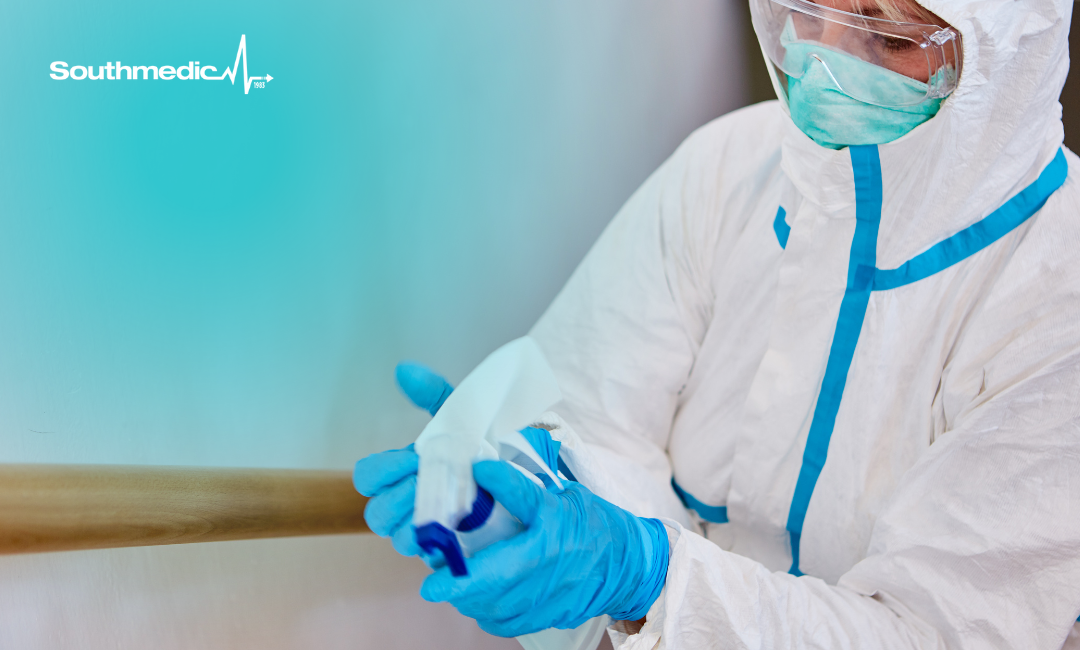Why Prop 65 is On Your Desk—Even Outside California
California’s Proposition 65 isn’t just a coastal quirk. It’s an exposure-based law that requires businesses to give “clear and reasonable” warnings before knowingly and intentionally exposing people to listed chemicals—unless exposures are below defined thresholds. If your system buys across states, standardizes SKU lists, or fields RFPs from national distributors, you’ll run into Prop 65 one way or another.
The part most people miss: you don’t need a warning if exposures are below OEHHA’s “safe harbor” levels—the No Significant Risk Levels (NSRLs, for carcinogens) or Maximum Allowable Dose Levels (MADLs, for reproductive toxicants). That’s the center of gravity for detergent reviews.
Prop 65 in Plain English (for Detergents)
- It’s Exposure-Based. Prop 65 lists 900+ chemicals; OEHHA publishes safe-harbor levels for many of them. If anticipated exposure during normal use is at or below those levels, no warning is required.
- If There’s No OEHHA Safe Harbor for a Chemical: a business can still avoid a warning by showing the exposure will not pose a significant risk—OEHHA even describes how to calculate your own level and request Safe Use Determinations.
- Warnings Themselves Are Regulated. OEHHA maintains “clear and reasonable” warning content, including recent updates to short-form warnings. (Helpful when Legal asks what the exact label would have to say.)
What Reviewers Should Look For in a Detergent’s Prop 65 Posture
1) A current declaration stating the product does not require a Prop 65 warning based on expected exposures under normal use and referencing safe-harbor levels. (Cross-check the declaration date against your review window.)
2) SDS + surveillance statement explaining supplier attestations and ongoing monitoring, because the Prop 65 list is updated over time. (OEHHA updates and interpretive guidance are public; your supplier should track them.)
3) Portfolio consistency. If you standardize, verify status across all forms—foams, sprays, automatics, descalers—so you don’t create site-to-site exceptions.
4) Clean packet language reviewers can drop into a committee brief: “Based on anticipated exposure at normal use, no Prop 65 warning is required under current OEHHA safe-harbor thresholds.”
Performance Still Rules: Where Prop 65 Sits in the Bigger Picture
Prop 65 is about exposure and labeling, not cleaning efficacy. For surgical instruments, your detergent still needs to perform on organic soils (blood, protein, fat, carbohydrate) and fit real SPD workflows (point-of-use, lumens, low-temp compatibility). Prop 65 status shouldn’t force a trade-off; it should reduce friction in approvals while you evaluate detergents on cleaning outcomes.
(If you need evidence guidance for cleaning itself—e.g., borescope findings and the first-hour window—use your existing clinical sources and IFUs. Prop 65 won’t tell you what cleans better; it tells you whether a warning label is required.)
Myths That Slow Down Detergent Approvals
- “Prop 65 only matters in California.”
Multi-site systems prefer one playbook; Prop 65 status is a common denominator for national approvals. - “No warning required” = chemical-free.
No. It means anticipated exposures are below safe-harbor thresholds set by OEHHA. - “If OEHHA hasn’t set a level, we’re stuck.”
Not necessarily—businesses can calculate levels and even seek Safe Use Determinations. - “Any warning phrasing is fine.”
OEHHA prescribes safe-harbor methods and content, including recent short-form changes. Use their language.
Implementation Playbook (3 Weeks, Minimal Drama)
Week 1 — Collect & verify
Pull the Prop 65 declaration, SDS, and surveillance statement from the supplier. Confirm declaration date and product list match what you’re buying. (If you offer CA and non-CA sites, lock a single standard.)
Week 2 — Committee packet
Add a one-page summary: safe-harbor concept, “no warning required” status, and who maintains surveillance. Include links to OEHHA’s FAQ on safe-harbor levels so Legal/IPAC can self-verify.
Week 3 — Education & audit
Update your LMS slide to explain exposure vs. ingredients; post the declaration and SDS in your chemical binder/SharePoint. If you ever do need a warning for a product, use OEHHA’s “clear and reasonable” language, but your goal with detergents is to avoid that step through exposure control.
Example Product Posture: What a Clean Package Looks Like (Southmedic)
- Statement: Southmedic’s detergent portfolio is not expected to require a Prop 65 warning under current safe-harbor criteria; applies to EcoZyme™ Foam Spray, EcoBase™ Foam Spray, EcoZyme™ Spray, EcoZyme™ Ultra, EcoZyme™ Auto, EcoBase™, and EcoSonic™ Descaler.
- Basis: Formulated to avoid significant exposure to listed substances at point of use; evaluated against current OEHHA safe-harbor levels; ongoing supplier surveillance.
- Documentation: Proposition 65 Declaration dated October 8, 2025 (available on request).
Sourcing note: Southmedic’s Prop 65 declaration is an internal supplier document. It is not publicly hosted; we provide it directly to reviewers upon request. (No external link to cite.)
Public reference for definitions and process: OEHHA’s business FAQs and safe-harbor explainer.
Buyer’s Checklist (Copy/Paste For Your Packet)
- Current Prop 65 declaration with date and covered SKUs (request from supplier).
- SDS for each SKU on the formulary.
- Surveillance statement describing supplier attestation cadence and how changes are communicated.
- OEHHA links for reviewers:
- Businesses & Prop 65 (what the law requires).
- Safe-harbor levels (NSRL/MADL) overview.
- If no safe-harbor level exists (how to calculate/justify).
- Clear and reasonable warnings (for context if ever needed).
The Fast Path Forward
If your goal is one standard across sites with fewer approval loops, start by locking in detergents with a clear, current “no Prop 65 warning required” posture and complete documentation. That way, exposure is handled and you can focus reviews where they belong—on cleaning performance, workflow fit, and outcomes.
Want the full regulatory packet (Prop 65 declaration + SDS + surveillance statement) for EcoZyme, EcoBase, and EcoSonic? Contact regulatoryaffairs@southmedic.com or schedule a call with an SPD rep, and we’ll send it in a single bundle, along with OEHHA links for your reviewers.

